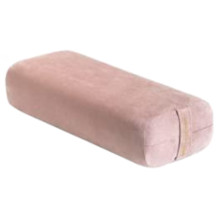Yoga mat purchasing advice: how to choose the right product
- What You Need to Know
- Yoga mats provide a stable surface on which to practice yoga, regardless of the floor underneath.
- The size of the mat depends on your own body size. The thickness depends on whether you need something to soften the floor surface.
- Mats can either be made of synthetic or natural materials. It’s important to ensure that your mat is free of harmful substances.
- Employing yoga cushions and blocks can help to make your training even more effective.
Yoga: Anywhere and Anytime
Yoga isn’t simply a new trend or fashion—it is an age-old tradition and philosophy which includes an array of spiritual and physical teachings, designed to bring the practitioner an inner feeling of purity and balance. In our current age of fast living, stress is always hiding just around the corner. It is for this reason that yoga is currently more popular than ever, as people look for a traditional practice to reduce stress and create spiritual balance. Yoga mats are the optimal surface on which to follow this endeavour.
Yoga mats are a surface on which you can practice all manner of exercises without having to worry about the floor underneath. Thanks to their slip-proof surface, yoga mats provide a sturdy foundation. They are light and easy to carry, meaning that they can be used as part of an every-day routine. Whether at home, in the yoga studio, or outside – having the correct yoga mat allows you to pursue inner peace wherever you are. Mats are available in different sizes and are usually made without harmful substances.
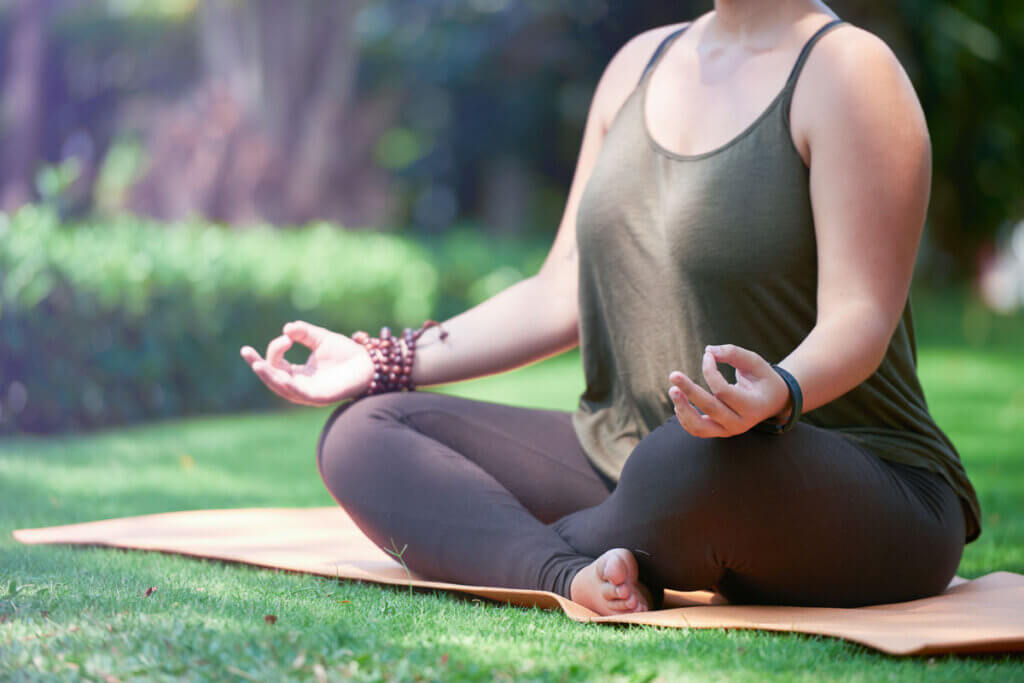
You should make sure, however, that your mat fits your own specific requirements. If your yoga mat is too small or too thin, you risk not giving your body the support it needs. In the worst-case scenario, a poorly designed yoga mat can turn your relaxing yoga session into an exercise in self-torture. If you feel any poking or rubbing coming from the mat itself, stop your training immediately. This is the sign of a badly manufactured mat that potentially doesn’t have enough padding.
What is Yoga?
Yoga is a philosophical teaching from India that includes a range of different spiritual and physical elements. The basic idea of the practice is to unite body and soul and to promote concentration. Yoga is part of an ancient tradition that can be traced back to manuscripts detailing exercises for breathing and sensual concentration from 700 BC. The term ‘yoga’ itself was first used around 400BC. In the beginning, yoga was a purely spiritual exercise. Meditation was central in the search for enlightenment as the first yogis(yoga practitioners) began to prioritise a methodology focused on the body. They recognised the positive effects of physical exercise on both the body and spiritual wellbeing of the practitioner. These bodily practices (also known as Asanas) were continually developed over the centuries and form the basis of contemporary yoga. Through these practices, anyone can attempt to find their own inner balance.
World Yoga Day
Yoga is practiced today by countless followers around the world. Since 2015, the 21st of June has been celebrated as World Yoga Day. World Yoga Day was conceived by the Indian government and, since its inception, the United Nations General Assembly has even passed a resolution consecrating the physical health benefits of yoga.
How Does Yoga Work?
Yoga strengthens coordination, flexibility, strength, and even the endurance of body and spirit. It stimulates the metabolism and, in combination with the correct exercises can help prevent heart disease. Stressed and over-worked practitioners can find a balancing effect in its practice. Yoga develops improved self-reflection that helps with the identification of health problems and stress reduction. The effects rely on the length and type of training undertaken. In general, it is thought that the best results are achieved when doing less, but more frequently. Beginners have nothing to fear. It was once said by Tirumalai Krishnamacharya, ‘The Father of Modern Yoga’ and one of its more influential teachers in the 20th century, that everyone can do yoga.
Why Do I Need a Yoga Mat?
A good yoga mat ensures that you don’t slip while performing your exercises. This allows you to concentrate entirely on your breathing and movements. Yoga mats are also good for the joints. Lots of exercises are performed in either a lying or sitting position. A mat prevents you from coming into direct contact with the hard, cold floor. This is easier on your body and stops you from losing your body heat.
What Should I Consider When Buying a Yoga Mat?
The most important thing to be aware of when buying a yoga mat is the size. The length and width must be appropriate for your body size. The thickness of the mat depends on whether you have joint problems, or whether you have a personal preference for training on a harder or softer surface. Natural materials are longer lasting than synthetic alternatives. If you plan to transport your yoga mat frequently, it is better to have something low weight with a carry strap. The pattern of a mat is totally down to your own preference.
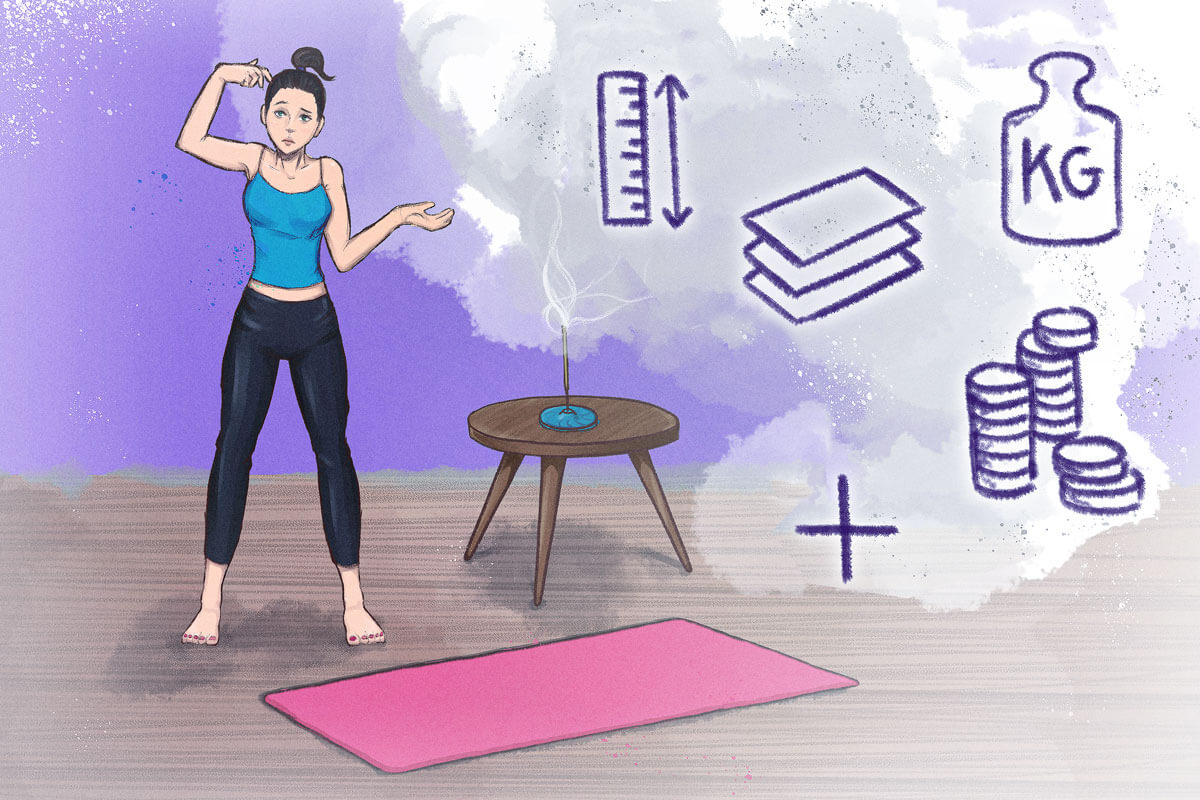
Size
Yoga mats differ in their width, length, and thickness. The correct size for you depends entirely on your own body size. Most yoga mats are between 60cm and 70cm wide. Some manufacturers offer models which are up to 100cm wide. These are sometimes marketed as XXL versions.
Yoga mats are generally between 180cm and 200cm long. Usually there is a correlation between length and width. The widest models are therefore between 190cm and 200cm long. It’s recommended that your head and feet fit comfortably on the mat.
The thickness of different yoga mats ranges from 0.5cm to 1.5cm. If you have sensitive knees, hands, or elbows, then a thicker yoga mat is recommended. Beginners are also better off with a thicker mat. If your joints are not sensitive and you like to have more stability, a thinner mat is more appropriate. These are better for exercises which train balance. Thinner mats are also better for travellers, as they roll up quickly and can be easily stored. It is generally thought that thick mats are better for relaxing yoga, while thinner mats are better for dynamic yoga.
Material
Manufacturers use either natural or synthetic materials when making yoga mats. The material should be elasticated, durable, and not give off a strong, artificial smell. The STANDARD-100 label from OEKOTEX and the test safety certificate from the SGS Institute Fresenius are good signifiers that the material in question doesn’t contain harmful substances. It’s also important that the material is slip-proof and washable on both sides.
Synthetic Materials
Synthetic materials tend to be cheaper than natural ones. They are, however, less environmentally sustainable, even if they are made from biodegradable material, like TPE. Most manufacturers make sure to use skin-friendly materials that are free of harmful substances.
Example Materials: PVC, TPE, Latex, synthetic rubber
Natural Materials
Natural materials are mostly more expensive but also more sustainable. The body comes in direct contact with the mat and consequently, lots of users find natural materials more comfortable. On the other hand, they are often not as slip proof. Accordingly, they are often aimed at relaxing yoga styles. Allergy sufferers should also check whether they are allergic to the material.
Weight
Yoga mats are not particularly heavy. Most models weigh about one to three kilos. Particularly light mats can weigh less than a kilogram, while particularly heavy ones can weigh more than three. Those looking to regularly transport their yoga mat or use it while on a trip are recommended to opt for a lighter model. Heavier versions are best when you are mainly using your yoga mat at home, or if you are in need of added padding.
Price
Good quality yoga mats cost between £20 and £50. Very cheap models are available for £10, although their quality is often not up to scratch. High-end models can cost in the region of £100 to £200. The price is most heavily affected by the materials. For example, natural rubber is a lot more expensive than synthetic rubber. The size also plays a role, with XXL models being significantly more expensive than normal sizes. You will usually be required to pay more for eye-catching and extravagant designs.
Accessories
Using yoga cushions and yoga blocks is a great way to mix up your practice. Yoga cushions are either conventional cushions which support the head and neck during floor exercises, or special sitting cushions for practicing meditation in the correct posture. Raising your pelvis by sitting on a small cushion makes it easier for you to keep your back straight. This can be particularly helpful for people who are not in shape or just starting out with their yoga practice.
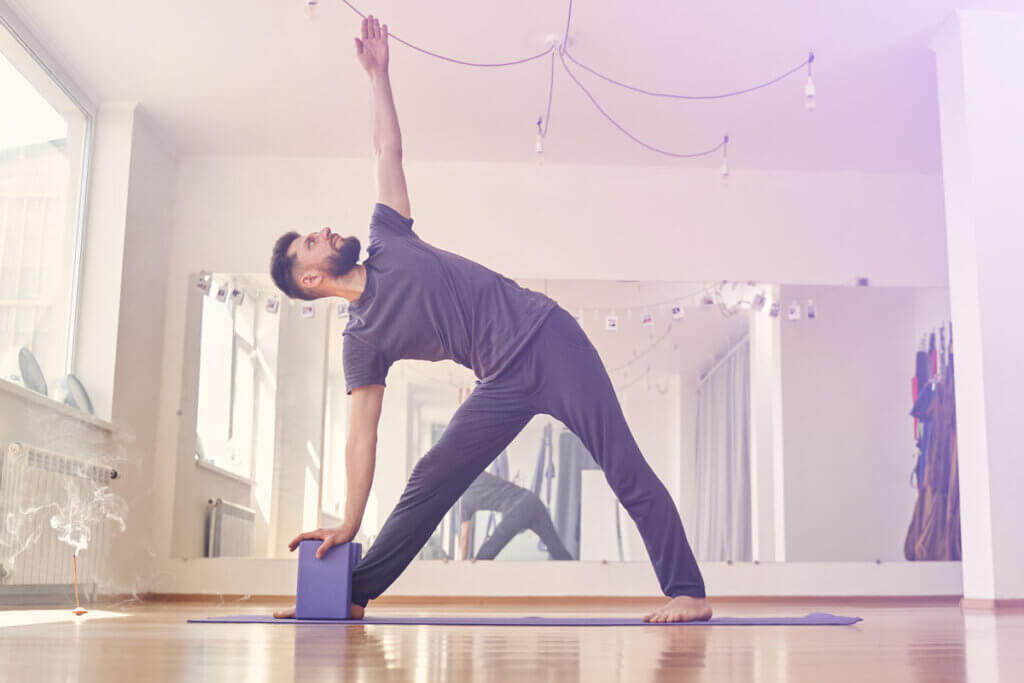
Yoga blocks are made from foam, cork, or wood, and help support the body in different ways during training. The difficulty of exercises can be adjusted by including blocks into a training regime.
Lots of yoga mats are sold together in a set with a carry strap or carry bag. The strap is usually fastened to the mat with two loops. A carry bag, meanwhile, offers the advantage of protecting the mat while it is being carried.
Special cleaning products can be used to maintain your yoga mat. That said, water is usually all you need to clean them. Deep-lying dirt is, however, difficult to remove without the help of a dedicated cleaning product.
Tips for Training with a Yoga Mat
Before using your yoga mat for the first time, it’s worth considering a few important points. As soon as you are done with your preparations, you’ll be ready to start your yoga practice.
Correct Usage
Clean your mat before you use it for the first time. It is suggested to clean your mat before every training session, as the slow build up of dirt can negatively affect the anti-slip properties of the mat. Leave your mat in the sun or in a warm room to dry out. Only use the mat with bare feet or while wearing anti-slip socks. Anti-slip socks give your feet a stable basis for exercise, even when they are sweaty, as they help to absorb sweat. Normal socks, meanwhile, are usually too prone to slippage to wear while doing yoga correctly. Shoes shouldn’t be used on the mat as they as both unsuitable for doing yoga and potentially damaging to the mat itself.
During training, you should attempt to remove all distractions. Put your smartphone away, take off your headphones, and turn off the TV. Gentle, meditative music is the maximum level of stimulation you should allow yourself. If you are looking to practice by yourself, you should make sure to find a quiet place to practice. Advanced practitioners can practice in public parks because they are less distracted by their surroundings. Beginners, on the other hand, should focus on finding a quiet location, so they can focus exclusively on their breathing.
Bodily Practices
The calming body positions in yoga are termed ‘asanas’. In most types of yoga, practicing breathing technique, or the so called ‘pranayamas’, is an essential component. There is an unbelievable range of yoga positions. Each position has its own specific set of variations and drills. More than 80,000 yoga positions are mentioned across Hindu literature. The following list contains some of the most well-known examples:
- Downward facing dog
- Lotus pose
- Candle pose
- Fish pose
- Cobra pose
- Grasshopper pose
- Triangle pose
- Hero pose
- Tree pose
- Corpse pose
Added to the asanas are the karanas, also known as the ‘vinyasas’. These are dynamic practices which build upon the asanas poses. The breath-led movements are created from different asanas performed one after another. The ‘Sun Salutation’ is the best known of these rotations. It is a run of twelve different poses, linked together by a specific breathing pattern.
It is important to always begin your practice mindfully. The correct breathing, a conscious posture, and accurate performance of the poses is essential. Pay attention to your balance as well as your feeling of wellbeing. Lots of practices require a serious degree of flexibility and coordination. For this reason, it’s important to not overstretch yourself. Performing practices incorrectly can cause injury. Beginners should only push exercises as far as they feel comfortable and strictly follow the directions of an instructor. Easier asanas are recommended for beginners. Those looking to increase the difficulty can combine difficult exercises with easier ones. More difficult poses can also be simplified, making yoga suitable for all kinds of people, regardless of their physical condition.
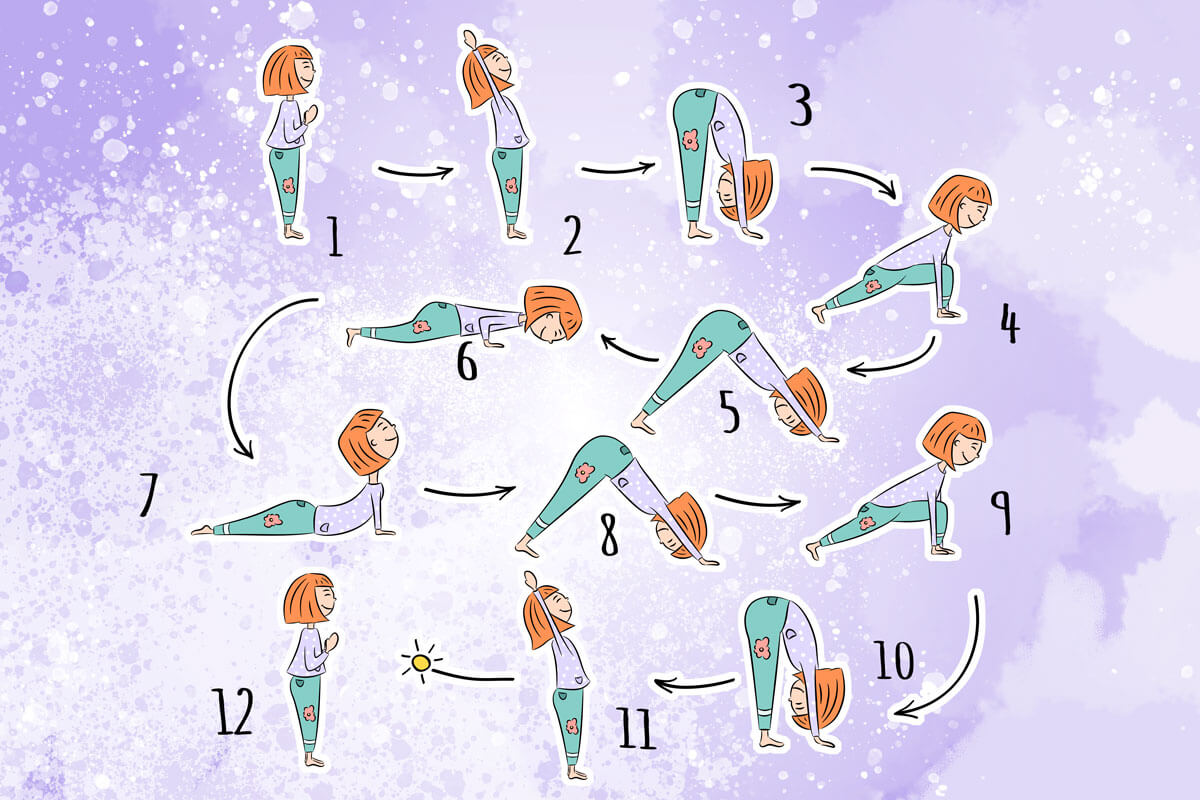

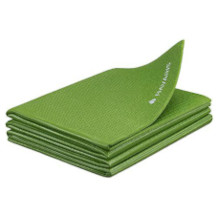
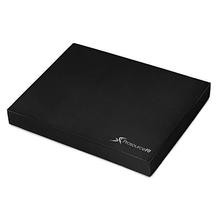
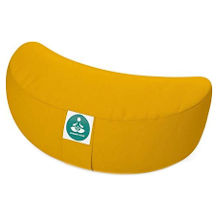
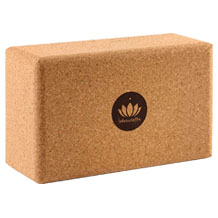

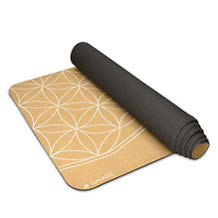
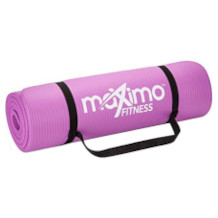
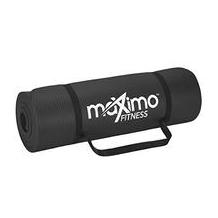
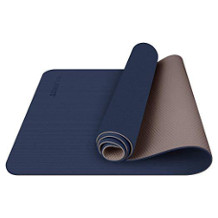
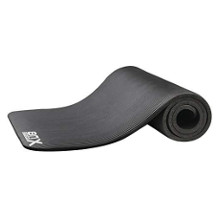
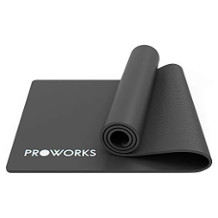
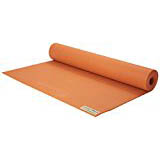
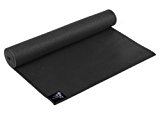
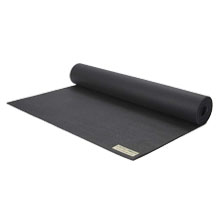
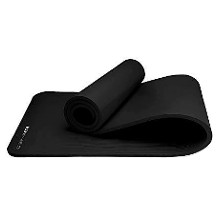
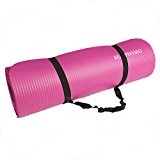

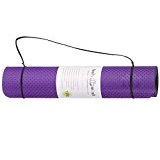



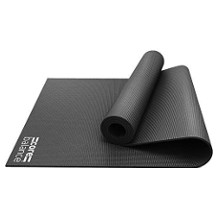
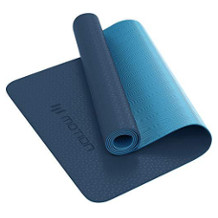

 1,807 reviews
1,807 reviews
